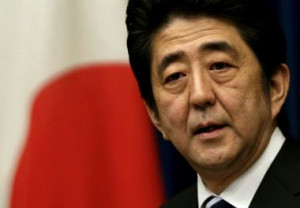
The importance of this statement of Mr. Abe is due to the fact that it concerns two major Asian powers, whose relations substantially determine today’s political map, not only in the Asian-Pacific Region, but also in the whole world in general. That is why it caused a wide resonance both at the forum itself and beyond it, despite the subsequent immediate explanations of the Chief Cabinet Secretary of Japan Yoshida Suga, that Japanese Prime Minister “did not mean the inevitability and even the possibility of a war with China”.
According to this “interpreter of thoughts” of his boss, he was referring to “the similarity of the situation”, in which the UK and Germany were before World War I, with the current political map in the East Asia Region. “He [i.e., Mr. Abe] emphasized the need to restrain an unlimited military expansion in Asia. I believe that by doing so, he stressed the importance of maintaining peace and stability” on the continent.
The reaction of the Chinese Foreign Ministry to the words of Mr. Abe in Davos was immediate. The spokesman of the Foreign Ministry of China Qin Gang, in particular, noted that Japanese Prime Minister had tried to cover up not only the recent aggressive history of his country, but also its current course of “re-militarization”, with an artificial analogy with the British-German confrontation in the early twentieth century. It is in this context that China treats the visit of Mr. Abe to the Yasukuni Shrine in late December 2013, which previously was conducted at the level of prime ministers, back in 2006.
Chinese Foreign Minister Wang Yi also commented, at the Davos forum, in a similar vein about the statement of the Prime Minister of Japan. He called the analogy, drawn by Mr. Abe – “anachronistic” – because, in his opinion, the current situation in the region is far from the situation “that existed 100 years ago” in Europe.
The statement of the new U.S. ambassador to Tokyo, Caroline Kennedy, in the Japanese press also seems remarkable, though it is apparently unrelated to the remark of Mr. Abe in Davos. Like at the end of the last year, it contained two provisions that showed the U.S. position, with respect to the situation evolving in East Asia, in an ambiguous light. On the one hand, she called the “peoples of the world” to encourage their leaders to such an interpretation of history, which would help to build a peaceful future. At the same time, she said that: “Japan has made a constructive contribution to the creation of a climate of trust in relations with its neighbors.”
It should be noted that the topic of comparing the situation, evolving in the Asian-Pacific Region, with the situation in Europe in early last century, is not new. Actually, it could not but occur after two interrelated trends that became apparent in the late 1990s. The first one is due to the rapid comprehensive growth of China, which is turning it into the second world power, capable of challenging the global hegemon that remained alone in the world after the collapse of the USSR. The second one is due to the, even then apparent, general shift in the global political and economic processes – from the Euro-Atlantic Region, where they took place for the last few centuries, to the Asia-Pacific Region.
It should be noted that prior to the said speech of Mr. Abe, this topic was the subject of discussion by a rather narrow circle of humanities academics and political scientists, during which various arguments “for” and “against” the legitimacy of such an analogy were considered. Moreover, the U.S.A. and China were the ones considered as the new “UK” and “Germany”, at least during the last decade. That is, Japan was not considered in the pairing of new potential global opponents.
On January 23, 2014, this taboo on mentioning this “academic” subject by official government figures of the leading world powers was broken by the leader of a country that has more and more unequivocally positioned itself as an independent “third force” in the Asia Pacific Region. It is particularly noteworthy that this happened right before the 100th anniversary of the beginning of one of the greatest disasters in human history.
Experts wonder what the Japanese Prime Minister’s “introduction” of this explosive political topic into the Economic Forum, which has always passed correctly and without any emotional outbursts, really meant. The most “calming” answer to it is the version of a deliberate provocation by Mr. Abe, having an internal aim intended at diverting the attention of the average Japanese person from the worsening problems in the economy of the country. Even if this was the case, then the way that this was done, seems unnecessarily rough and prompting an alarming association, rather than being “calming”.
Vladimir Terekhov, leading research fellow at the Asia and Middle East Center of the Russian Institute for Strategic Studies, exclusively for the online magazine New Eastern Outlook
